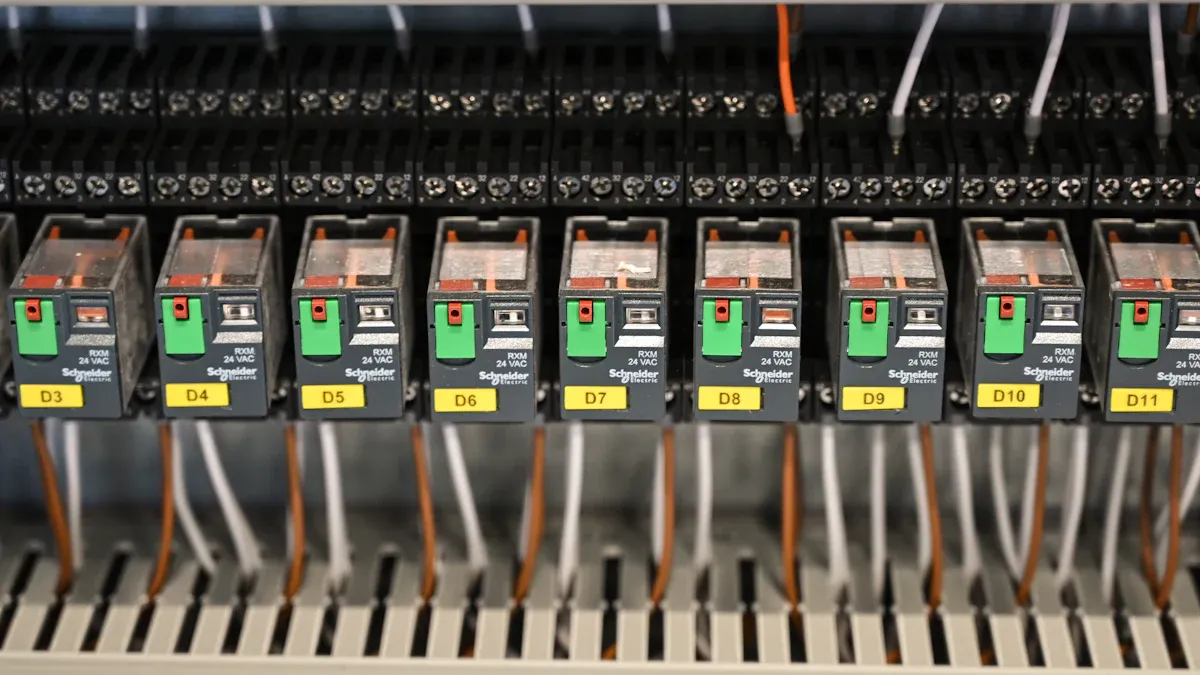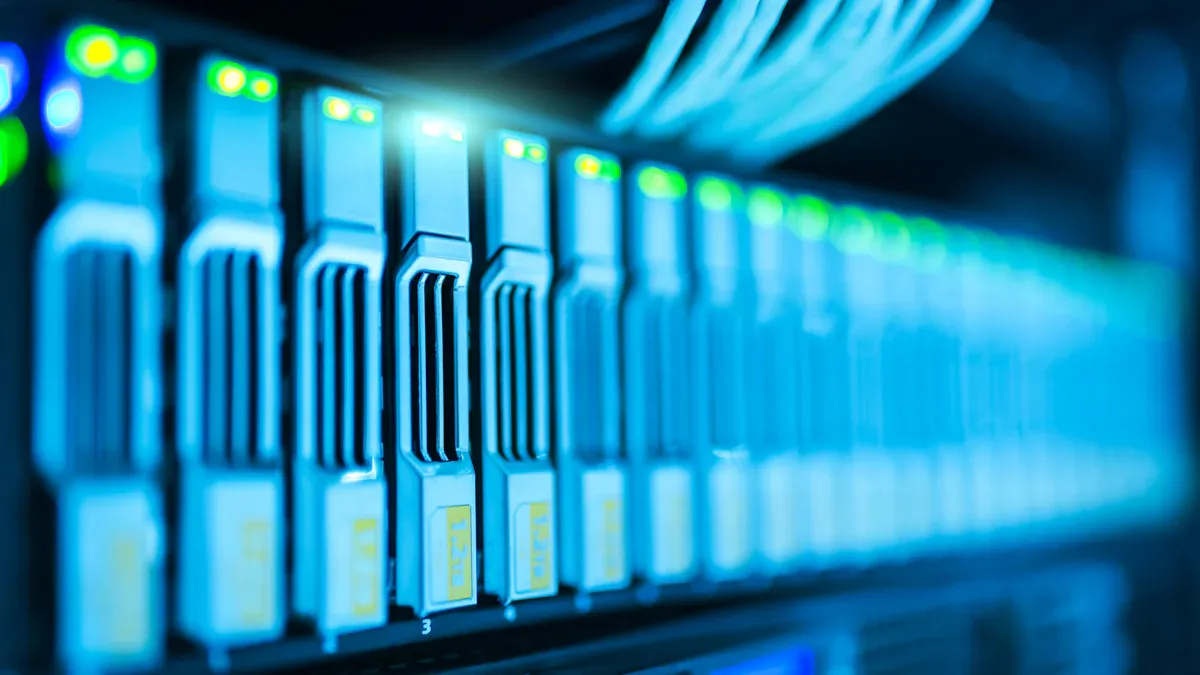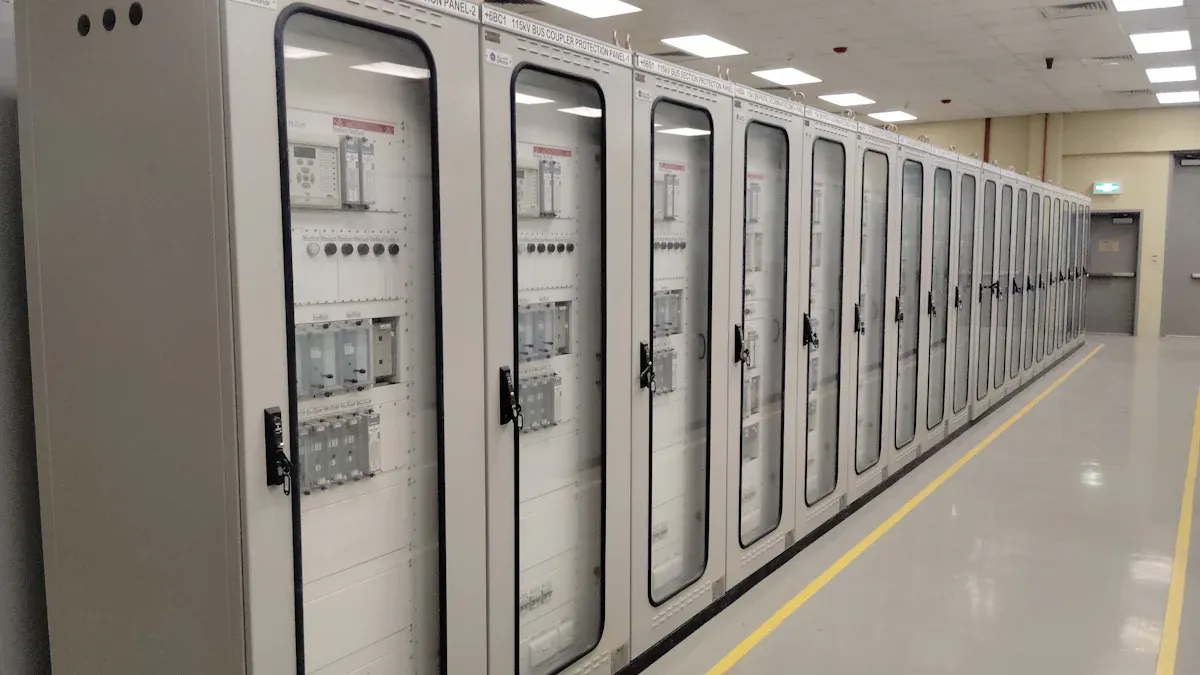© Copyright – 2010-2023 : All Rights Reserved. Sitemap
Power Distribution Unit PDU, rack mount PDU, PDU data center, Smart PDu, intelligent PDU
Power Distribution Unit PDU, rack mount PDU, PDU data center, Smart PDu, intelligent PDU
DTI-CX 2025 Digital Transformation Indonesia Conference, DATE:6-7 AUG.2025, Booth No.: C21

The modern electrical PDU delivers more than just power. Whether you choose a rackmount PDU, a vertical rackmount PDU, or even a basic PDU, today’s designs provide intelligent monitoring for precise energy tracking. Remote management capabilities allow for off-site control and power cycling of individual outlets. High-density power is crucial inside a data center to support new hardware.
The market for the intelligent power distribution unit is expanding rapidly, reflecting its growing importance.
| Year | Market Size (USD Million) |
|---|---|
| 2024 | 1,279.39 |
| 2025 | 1,473.16 |
Enhanced reliability in a power distribution unit ensures maximum uptime and security.
A Power Distribution Unit (PDU) is a device with multiple outlets. It distributes electric power to equipment inside a server rack. A PDU does not create power. Instead, it takes power from a source, like a UPS, and delivers it to servers, switches, and other hardware. This function is vital for any modern data center environment.
The role of the power distribution unit has grown significantly over time. It started as a simple power strip but has evolved into a critical piece of infrastructure.
This evolution makes the modern power distribution unit essential for ensuring uptime and managing energy efficiently.
PDUs are available in two main categories: basic and intelligent. A basic PDU functions much like a standard power strip. It reliably distributes electricity to several devices but offers no monitoring or remote control.
An intelligent, or smart, power distribution unit provides much more. It connects to the network, allowing administrators to monitor and manage power from anywhere. This capability is crucial for optimizing energy use and preventing downtime. The key differences are clear.
| Feature | Basic PDU | Intelligent PDU |
|---|---|---|
| Data Collection | None | Collects power usage data |
| Remote Access | No | Yes, via Web, SNMP, or SSH |
| Outlet Control | No | Yes, allows remote on/off/reboot |
| Environmental Sensing | No | Supports temperature/humidity sensors |
Choosing an intelligent or smart rack-mounted pdu helps organizations improve power efficiency. It provides the data needed for smart decisions, reduces energy costs, and supports sustainability goals by preventing energy waste.

Intelligent PDUs provide the data needed for effective energy management. They turn raw power data into actionable insights. This allows administrators to make informed decisions that improve efficiency and reliability. The right electrical pdu with power monitoring capabilities is a cornerstone of a modern IT strategy.
Metering provides a clear view of power consumption. A metered pdu can measure power at different points. Inlet-level metering measures the total power drawn by the entire power distribution unit. This data is essential for calculating key efficiency metrics like Power Usage Effectiveness (PUE). It helps administrators understand total rack power usage and available capacity.
Outlet-level metering offers a more detailed perspective. It measures the power used by each individual outlet. This granular data helps teams with precise load management and identifying underutilized or “zombie” servers that waste energy.
This detailed information is also vital for capacity planning. In colocation facilities, precise outlet-level data supports accurate billing for customers. This reduces disputes and improves financial transparency.
The environment inside a server rack directly affects hardware performance and lifespan. A modern power distribution unit can integrate with external sensors to monitor conditions within the rack. These sensors automatically detect changes in:
Maintaining optimal conditions is critical. The American Society of Heating, Refrigerating and Air-Conditioning Engineers (ASHRAE) provides guidelines for data center environments. They recommend a temperature range of 18 to 27 degrees Celsius (64.4 to 80.6 degrees Fahrenheit) for most hardware. Keeping conditions within these recommended ranges prevents equipment from overheating. This proactive monitoring helps avoid costly downtime and extends the life of valuable IT assets.
Remote management and control transform a power distribution unit from a passive device into an active IT asset. These features allow administrators to manage power from any location. This capability is essential for maintaining uptime and improving operational efficiency in a modern data center.
A switched pdu gives administrators precise control over each outlet. This feature, known as remote power management, allows IT teams to turn individual outlets on, off, or reboot them through a network connection. This function is critical for resolving issues with unresponsive equipment without needing to be physically present. Outlet-level power cycling significantly reduces downtime and minimizes the need for costly site visits.
Common uses for controlled outlets include:
These actions can even be automated with simple scripts, further simplifying IT operations.
Intelligent PDUs actively monitor for potential problems. Administrators can configure specific thresholds for alerts. For example, they can set warning and critical levels for current consumption on each phase. The power distribution unit will automatically send an alert if these thresholds are crossed.
These instant notifications allow teams to address issues like overloading or environmental changes before they cause an outage. This proactive approach is key to ensuring reliability.
Alerts are typically sent using standard communication protocols.
This system ensures the right people get the right information at the right time.

Modern IT hardware demands more power and greater reliability. A power distribution unit must deliver high-density power safely and consistently. Enhanced security features are also essential to protect the network-connected aspects of the device.
The rise of artificial intelligence (AI) and machine learning has increased power needs inside the data center. High capacity PDUs are now essential to support this power-hungry equipment. A single rack of AI servers can consume significant energy.
| Equipment Type | Power Consumption (kW) |
|---|---|
| AI-capable equipment | 30 – 100 |
| High-Density Rack | 10 – 30 |
To meet these demands, facilities are adopting PDUs with higher kilowatt ratings. Many enterprise data centers now use PDUs in the 20 to 35 kW range. Some advanced units can even deliver over 55 kW per rack. Three-phase power distribution helps manage these high loads. It balances power across circuits, which improves efficiency and reduces stress on the electrical system.
A high density pdu provides more outlets in a compact vertical space. This design is crucial for racks filled with servers and network switches. These PDUs often feature a mix of outlet types to support various hardware.
Accidental power cord disconnections can cause serious downtime. To prevent this, many PDUs include outlet locking mechanisms. These systems physically secure the power cord to the outlet, ensuring a stable connection even when staff are working inside the rack.
Reliability also depends on secure network access. An intelligent electrical pdu connects to the network for remote management. This connection must be protected from unauthorized access. Modern units use strong security protocols to safeguard communications.
Key security protocols include:
These security layers ensure that only authorized personnel can monitor or control the power distribution unit. This prevents malicious activity and protects critical infrastructure.
To prepare for 2025, organizations should prioritize an electrical pdu with intelligent monitoring, remote control, and high-density power. Evaluating specific needs for capacity and outlet density helps select the right power distribution unit for any data center. Upgrading a power distribution unit delivers clear benefits.
Specialized manufacturers offer advanced power management solutions to build a future-proof IT infrastructure.
A basic PDU simply distributes power. An intelligent PDU connects to the network. It lets administrators monitor energy use and control individual outlets from a remote location. This provides valuable data for managing power.
Remote management allows IT teams to control power from anywhere. They can reboot unresponsive equipment without visiting the data center. This feature significantly reduces downtime and lowers operational costs for the organization.
A high-density PDU delivers more power and provides more outlets in a compact vertical unit. This design is essential for supporting modern server racks filled with power-hungry hardware like AI servers.
An intelligent PDU improves reliability with proactive alerts and remote control. It notifies staff about power or environmental issues before they cause an outage. Remote reboots quickly resolve equipment freezes, ensuring maximum uptime.
A Professional And Leading Manufacturer
For OEM
& ODM Power Distribution Unit (PDU)
You Can Trust
CONTACT
Ningbo YOSUN Electric Technology Co., LTD
Leading Professional Manufacturer in PDU Power Solutions
Contact Info.